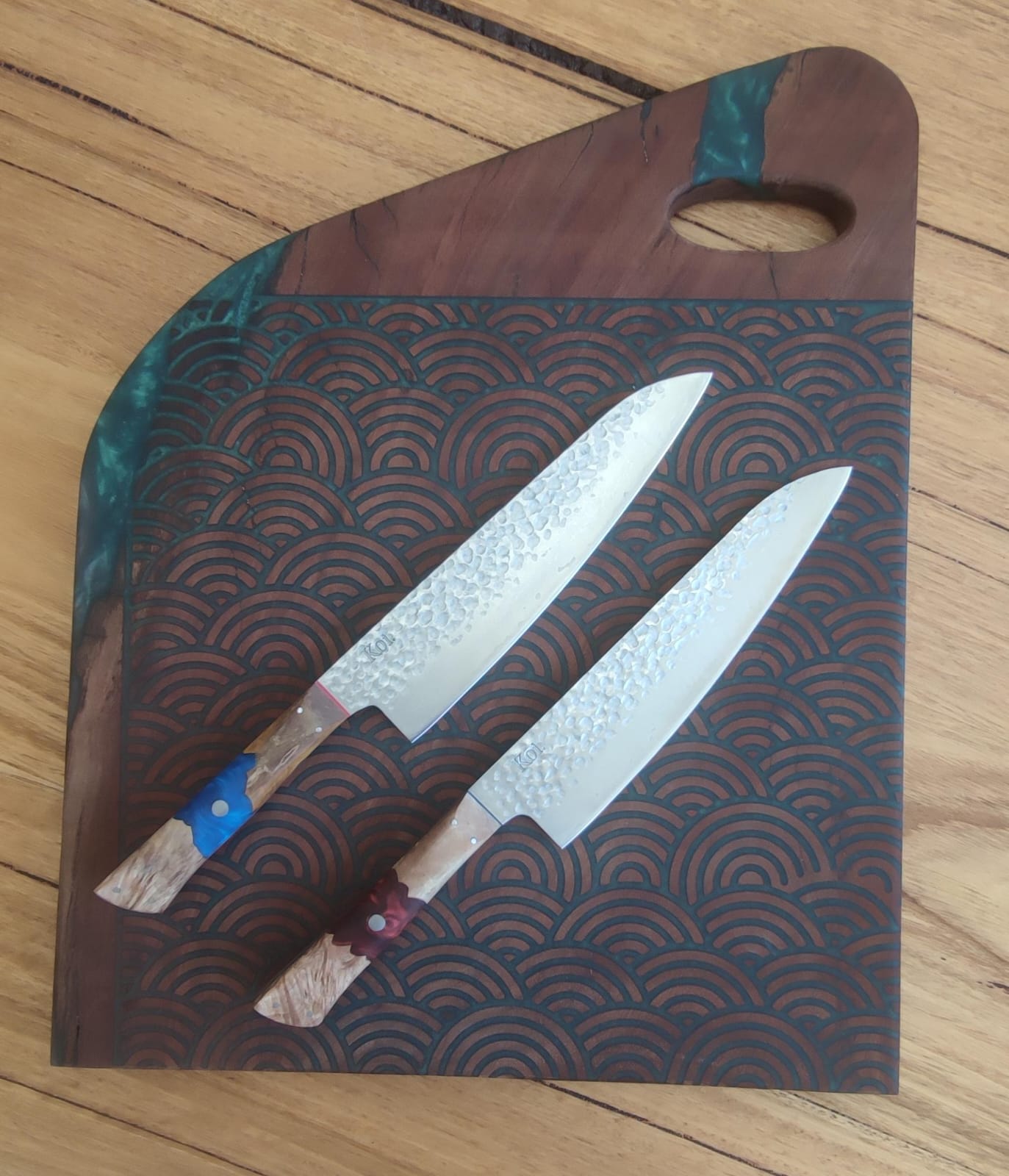Prepping ingredients is at the heart of any home cooking endeavor.
However, some basic knife skills take practice to master. This post will break down common cuts and provide guidance on proper techniques using your Japanese knives.
Dicing
Dicing produces small, uniform cube-shaped pieces.
Hold the knife handle near the front for control while rock chopping with your other hand curled back.
For firm items like potatoes, make parallel cuts lengthwise, then widthwise, before cubing the squares.
For softer items like tomatoes, just make crosshatches before cubing. Aim for 0.5-1 cm pieces.
Julienne
To julienne ingredients creates matchstick pieces.
For firm items like carrots, first cut on an angle into slender sticks about 3 mm thick. Stack the sticks and slice lengthwise into thin matchsticks.
For softer items like zucchini, just cut across diagonally into thin oval strips that will fall into matchsticks. Aim for pieces 7-10 cm long.
Brunoise
Brunoise is similar to a dice but with even smaller 3 mm or smaller cube pieces. Follow the dicing technique but produce smaller squares before cubing. This cut is perfect for garnishes or finely chopped herbs. Work slowly and carefully with a gentle rocking motion to finely mince.
Slice
Proper slicing starts by first removing any tough stem or core. Hold the knife handle for support while resting blade tip on the board. For items like tomatoes or bell peppers, straddle the knife over your fingers on the board to make steady slices without gouging the surface. Thinner items like cucumbers are best held in one hand while slicing with the other.
Julienne Slices
To turn slices into long, thin matchsticks or ribbons, first slice the ingredient evenly about 3 mm thick, then stack slices and finely julienne lengthwise. Great for carrots, zucchini, or cabbage to add texture and color to salads or stir fries.
Onion Slices
Onions require special care due to their acidity. Hold the onion root-side down with your guide hand fingers curled back from the blade. Make parallel cuts from the root through the tip, leaving root intact, before slicing crosswise into thin crescents or half-moons. Storage in water prevents tearing.
Herbs
For fresh herbs, chop with a rocking motion using the tip of the knife blade curled under. Work over a mound to avoid cutting the board. Or, for rolled leaf varieties like basil, stack and chiffonade into fine ribbons by rolling and slicing crosswise.
With practice of these basic cuts using the optimal Japanese knife for each task, prep will become second nature for creating balanced, chef-worthy dishes at home. Developing confidence with your knives is sure to boost cooking ability and enjoyment.




